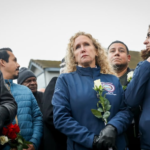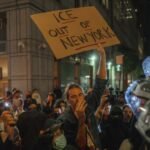Tuesday, January 14, 2025
Year : 2, Issue: 20
ABC7 News: Congestion pricing has been in effect for more than a full week now, and MTA officials say the numbers show traffic has decreased.
“The greatest improvements are on inbound river crossings,” said MTA Deputy Chief of Policy and External Relations Juliette Michaelson. “The effect is particularly pronounced in the morning commute.”
It now takes 30-40% less time to travel between Manhattan and New Jersey via the George Washington Bridge, Lincoln Tunnel and Holland Tunnel, the MTA said Monday in touting the effects of congestion pricing.
Numbers show, from last Sunday to Friday, between 475,000 to 561,000 cars drove into the congestion zone, a number which the MTA estimates this time of year would normally be closer to 583,000. That’s a 7.5% decrease in cars.
Also, subway ridership appears to have slightly increased compared to this time last year. Monday through Thursday of last week saw an average of 3.7 million riders compared to around 3.47 million on the same weekdays in 2024.
Ridership on MTA express buses was up 6% compared with Jan. 2024, from 67,000 to 71,000. Ridership was still less than 90% capacity on buses.
Buses in particular have benefited from reduced travel times, the MTA said. Cars driving crosstown have also benefited. Those trips are anywhere from 20-30% faster, the MTA said. Results are about the same to 20% faster traveling north-south on avenues.
And some New York Republicans say the data doesn’t matter.
Lawmakers including Staten Island Congresswoman Nicole Malliotakis visited President-Elect Donald Trump at Mar-a-Lago over the weekend, and discussed the future of congestion pricing.
But for now, Mayor Eric Adams says congestion pricing is the law of the land and just hopes fewer people driving in Manhattan doesn’t translate to fewer people enjoying Manhattan.







